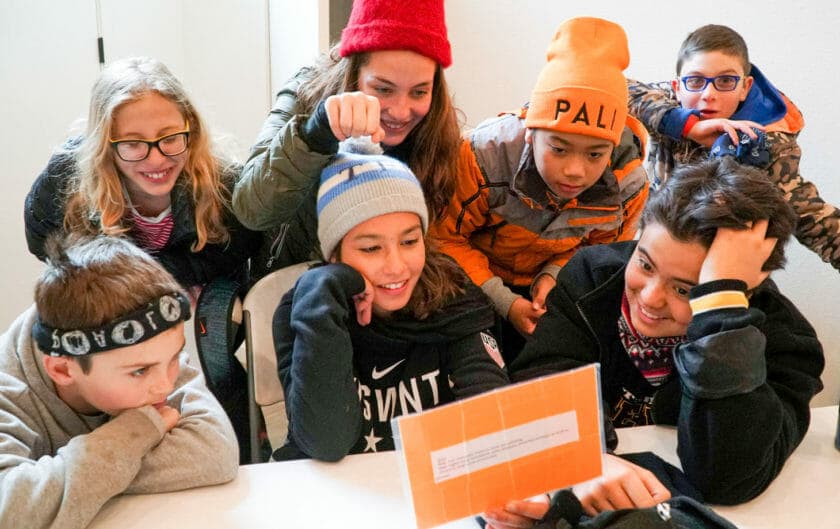Students explore the field of forensics and its importance in criminal justice by forming an investigative unit and working together to solve a mystery. They compare fingerprint patterns, study handwriting samples, and analyze video footage. After viewing all of the evidence in their bag, the junior detectives employ deductive reasoning to rule out suspects and reach a verdict.
What’s Covered
A heinous crime has occurred at Pali, and it’s up to the class to solve it! Who stole the snakes from our nature center? Students begin by brainstorming different investigative techniques and types of evidence. They practice leaving and examining fingerprints a variety of ways, analyze each other’s handwriting, discuss blood types & DNA and conduct a chemical test to check for the presence of blood. Older or more advanced classes may dive deeper into a discussion on genetics and dominant/recessive traits.
Lessons & Activities
Fingerprints
Handwriting Analysis
DNA & the Kastle-Meyer Test
Investigation
Educational Standards
- 5-6.h: Draw conclusions from scientific evidence and indicate whether further information is needed to support a specific conclusion.
- 6-7.e: Recognize whether evidence is consistent with a proposed explanation.
- 7-1.c: The nucleus is the repository for genetic information in plant and animal cells.
- 7-2.c: An inherited trait can be determined by one or more genes.
- 7-2.d: Plant and animal cells contain many thousands of different genes and typically have two copies of every gene. The two copies (for alleles) of the gene may or may not be identical and one may be dominant in determining the phenotype while the other is recessive.
- 7-2.e: DNA (deoxyribonucleic acid) is the genetic material of living organisms and is located in the chromosomes of each cell.
Ready to Get Started?
Accelerate your students’ learning with our exciting curriculum. Learn more about this hands-on, experiential education activity today.
